Nowadays, traditional direct marketing doesn’t work as well as it used to some years ago. In the age of banner fatigue, tunnel vision, and information overflow, you need something more captivating to influence potential customers.
It’s time to think about content marketing. In this article, you’ll find a step-by-step guide to create an effective content marketing strategy. Read on to figure out everything from setting goals to evaluating the performance of your content.
Content:
What is a content marketing strategy?
Content marketing is a marketing approach focused on creating and distributing valuable content to accomplish different brand image and performance goals.
Here are some examples of image goals:
- increasing brand awareness;
- improving brand credibility and building a positive reputation;
- handling negative feedback;
- creating an online community, building loyalty, and gaining brand advocates.
As for performance goals:
- expanding your customer base;
- retaining your audience;
- moving your audience through the sales funnel;
- attracting attention to a new product or feature, creating, and stimulating demand.
Some goals, like informing or educating users, can refer to both groups. However, to achieve these goals you need a strategic approach and that’s what a content marketing strategy is all about. It’s a general long-term and goal-oriented plan of activities connected with creating, publishing, and distributing content on digital platforms.
How to create a content marketing strategy
Creating an effective content marketing strategy is quite challenging. Most companies are not happy with their content marketing performance: 43% say the results are just “good,” 38% — “average.”
How businesses evaluate their content marketing strategy performance
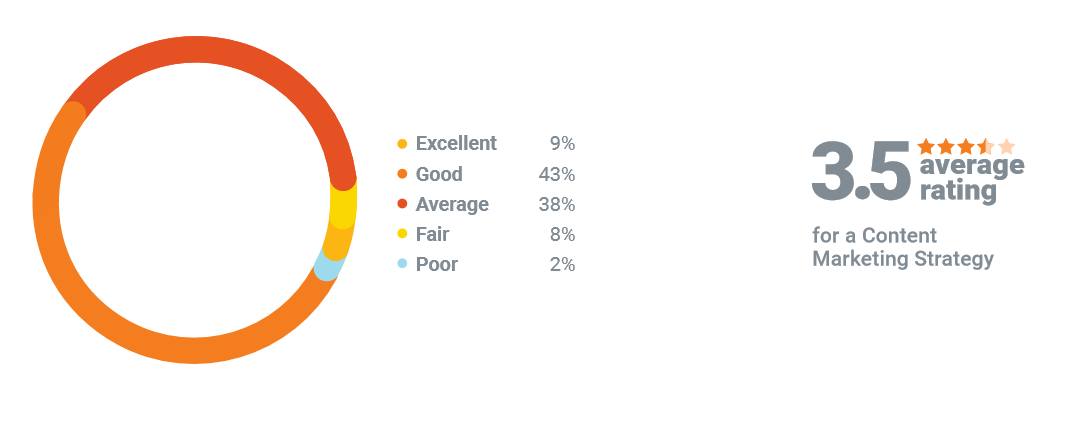
By following the steps and tips below, you’ll have a better understanding of how to create an excellent content marketing strategy that works for your business.
Step 1: Set your goals
First, divide your goals into either the image or performance category, set more specific goals, and prioritize them.
Use the SMART principle while setting your goals:
- Specific — establish goals related to your specific business area, not business in general
- Measurable — set specific criteria to track your progress towards meeting the goal
- Attainable — make sure you have enough financial, technological, and human resources to achieve the goal
- Relevant — set both realistic and essential goals for your business
- Time-bound — set a date or “deadline” for achieving the goal
Besides, it’s important to differentiate between long-term and short-term goals. For example, if your long-term goal is to become the most recognized apparel brand in your country, your short-term goals may be earning 20 mentions in apparel media over the next three months or attracting 1,000 new subscribers to your mailing list.
Step 2: Determine your audience’s pain points
Warning: brainstorming inside conference rooms doesn’t really help. Fortunately, there are some ways to collect data about your target audience:
- make the most of your subscription forms by asking for more information than only an email address in them;
- ask your subscribers to take a short survey;
- surf forums and social media pages;
- invite users for an interview, even over Skype.
Eventually, you’ll collect enough data to create customer profiles and segment your audience. This will allow you to tailor your content to each group of users and build better relationships.
Step 3: Create a content strategy template
Based on your goals and the information you’ve received during the audience research stage, try to identify:
- the type of content;
- the topic for content;
- resources you need to produce it;
- platforms for publishing;
- the quantity and frequency of new content posts;
- channels of distribution;
- the expected result.
Imagine you are about to release a new product soon. In this case, your goals are to increase product and brand recognition, create demand, and move your audience through the sales funnel.
Here’s a possible content marketing strategy template for that case:
| Business goal | Customer’s pain point | Type of content | Expected result |
| Recognition | There are lots of more popular products | Infographics, quizzes, articles | 5 mentions in niche media, +100% shares in social media |
| Demand | Doesn’t feel the need in the product | Original studies, success stories | 100 leads during the first week |
| Sales | Doesn’t see the value, the price is too high | FAQs, how-to’s, success stories | 10 sales during the first week |
A good content marketing strategy example is Sephora’s website: quizzes help users get acquainted with products while buying guides help them choose and order the most relevant items.
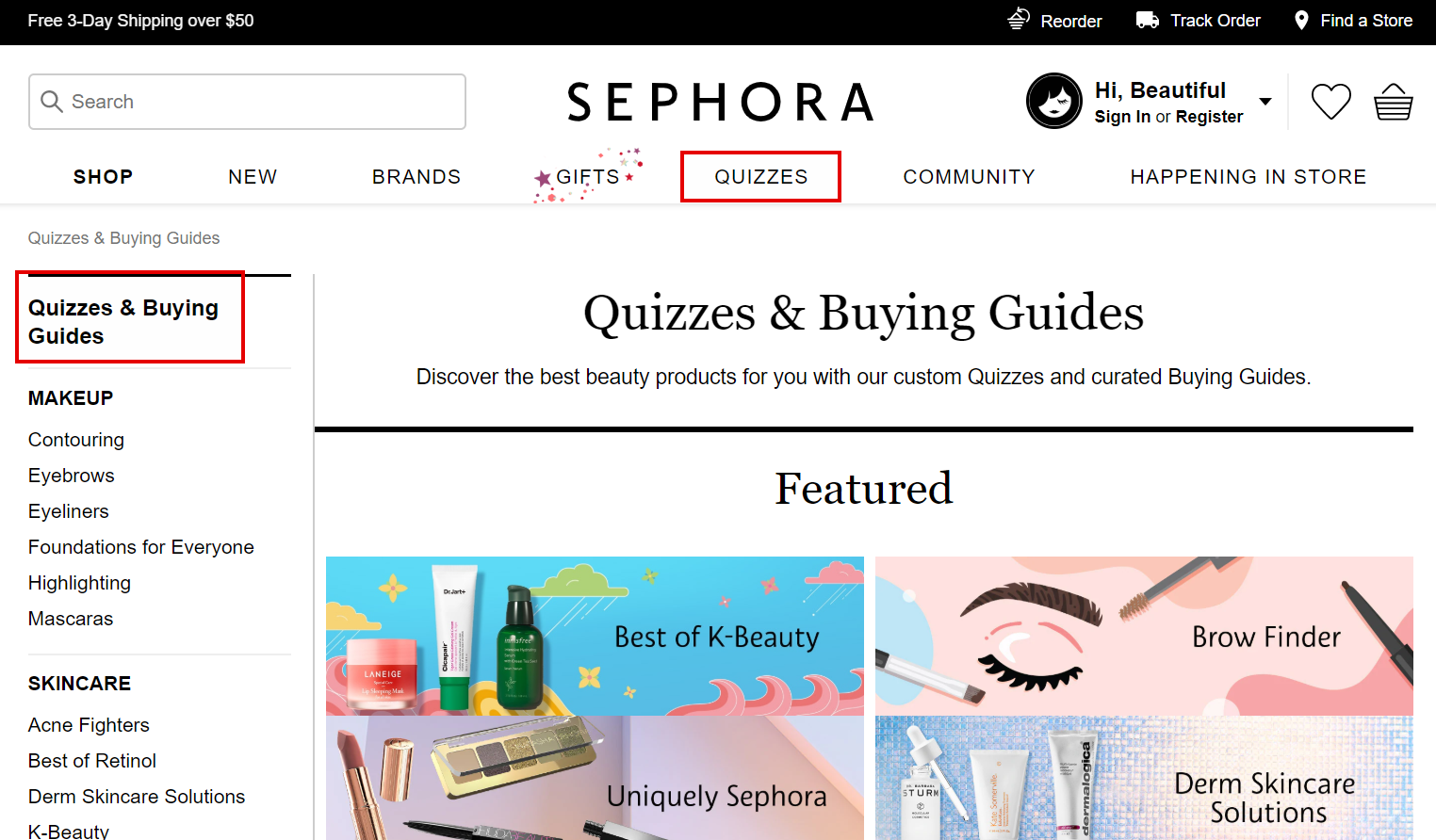
Step 4: Set up a team
Basically, a content marketing team only requires a content writer because text is the most cost-efficient compared to other types of content. But, this barebones approach is not sufficient if you want to create compelling content that will help you accomplish your business goals.
The dream content marketing team includes:
- writer or content creator to create texts;
- a content marketing manager or strategist to define the directions of content marketing and organize the processes;
- social media manager and email marketer to distribute content;
- designer to create images and videos;
- SEO content manager to improve website’s SERP position and attract more organic traffic;
- web developer to maintain your website, add necessary features, improve usability;
- data scientist or analyst to collect data and evaluate your content marketing performance.
Step 5: Calculate the budget
Successful organizations spend about 40% of their total marketing budget on content marketing strategy. It’s no surprise because, without paid channels, you can hardly expect good results as your content’s coverage will be relatively small. Put simply, without a decent budget, you can reach only the audience you already have: followers on social media, email subscribers, and the readers of your blog.
Moreover, to create quality content, your team needs professional tools, such as Adobe Illustrator or Figma for your designer.
So, apart from the salary for your content marketing team members, you should take into account extra expenses such as:
- paid advertising;
- blog maintenance or paid publications in professional media;
- tools;
- outsourcing;
- the motivation for subscribers if you want them to create user-generated content.
Step 6: Create content
Content creation starts with answering the question: in which stage of the sales funnel is your target audience? The goals and type of content depend on that.
- If your audience is at the top of the funnel (TOFU), your goal is to increase their awareness of your brand, product, or solution to their problem. You should make infographics, blog posts, videos, podcasts, eBooks, white papers, original studies.
- If your audience is in the middle of the funnel (MOFU), you should provide them with useful information about how to find a solution. Appropriate types of content are guides, how-to’s, webinars, reports, check-lists, quizzes, lists of useful resources, case studies.
- If your audience is at the bottom of the funnel (BOFU), you need to convince them that your product is the best solution to their problem. Use FAQs, customer success stories, detailed specifications. Then the content passes the torch to demos, free trials, and promo codes.
In all these stages, you need informational, entertaining, and promotional content. It’s important to keep a balance though: if you are constantly publishing only promotional content, you run the risk of losing your audience’s interest. On the other side, if you overemphasize the entertaining part, you won’t achieve your business goals.
The optimal content proportion is:
- 70% — informational
- 15% — entertaining
- 15% — promotional
You can also let your audience create content for you. User-generated content, or simply UGC, can benefit your content marketing strategy because you don’t need money to produce it, it’s relevant, and works as social proof — people often trust other people more than they trust a brand.
Step 7: Schedule your publications
Without a schedule, content can hardly work effectively. If you don’t have an opportunity to publish content often, at least try to do it on a regular schedule. You want to be predictable in the eyes of your audience: if you post 10 articles per week on your blog and then “die” for a couple of months, your audience will leave.
To improve your content’s performance, try to identify the best day of the week and time to post it — when your audience is most active. Look over your analytics to find the optimal time.
Step 8: Distribute
Another key part of your content marketing strategy is distribution. There are several channels you can use to distribute your content:
- push notifications;
- email;
- social media;
- messengers;
- cross posting and content syndication;
- organic search;
- paid advertising.
When choosing a suitable distribution channel, you should take into account two things:
- The type of content. Your content — be it text, visual, or audio content — should seem organic for the platform you’ve chosen. For instance, if you produce a photo or short video, Instagram is an appropriate distribution channel.
- The stage of the sales funnel. When a person is almost ready to buy or you have a hot offer, it’s best to use messengers or email marketing.
Sometimes the content goes viral, users distribute it themselves. Content that is shared by your audience usually includes some funny videos, memes, UGC, and so on. Talking about UGC, a good example is Coca Cola’s Share a Coke campaign: people all over the world were searching for cans and bottles with their name on it, and then shared photos and videos on social media. There are more than 660,000 posts on Instagram alone.
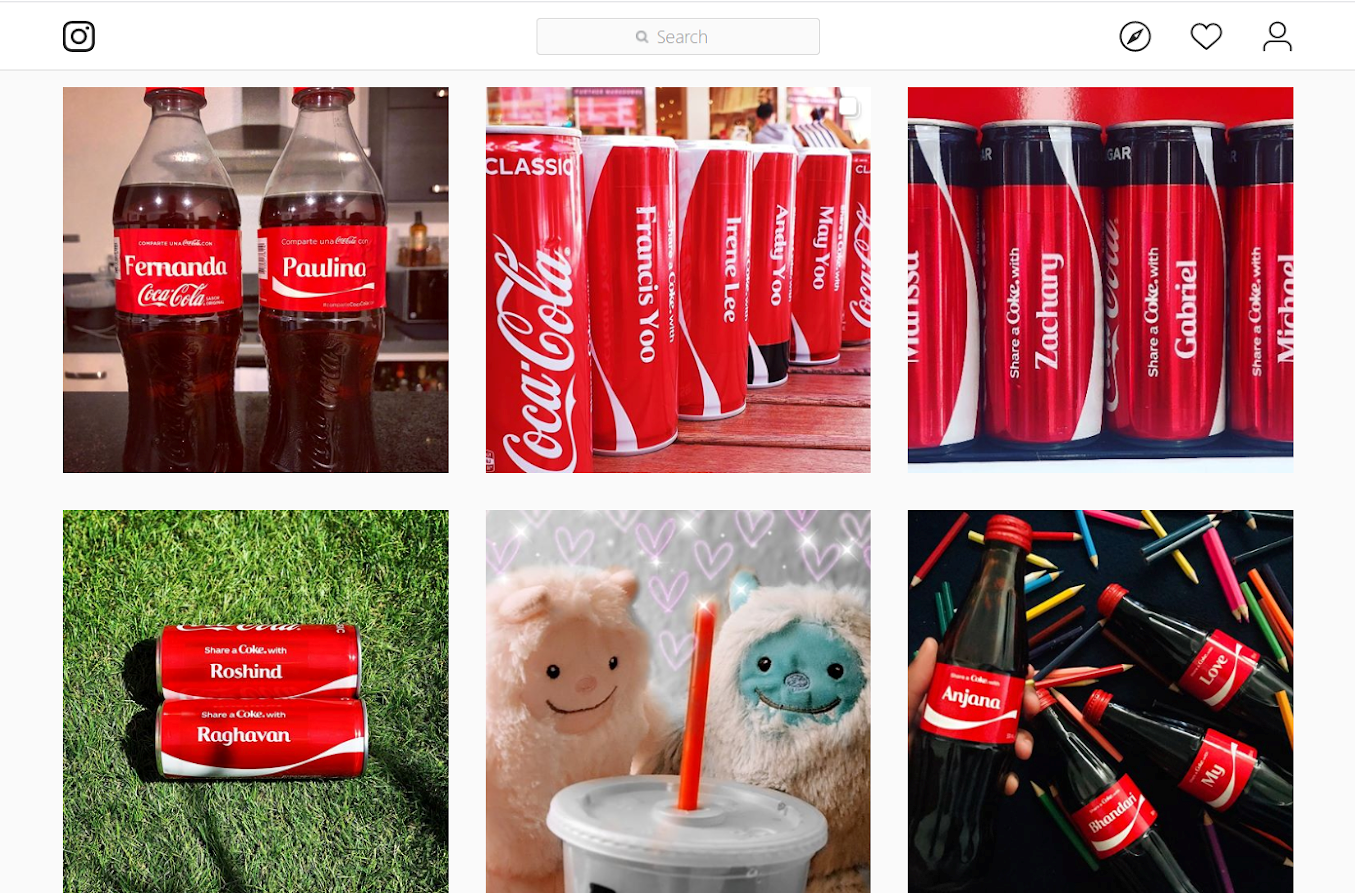
Step 9: Measure your content marketing results
After you distribute your content, the work isn’t over: you need to measure your content marketing results to optimize your budget on the whole and make the best of it.
An effectiveness evaluation should be based on your goals — brand image or performance goals.
To measure the performance effect, you can use metrics like:
- organic traffic;
- SERP position;
- leads;
- conversion rate;
- time on page;
- ROI.
If you have image goals, you can use these metrics:
- mentions in media and social media;
- pageviews;
- comments, shares, and likes;
- SERP position;
- backlinks.
Basic web analytics tools are usually sufficient to track most of these metrics. But if you want to make the most of your content marketing strategy, you might need something more.
Useful content marketing tools
Below you’ll find a brief review of the essential tools that will help you to plan, create, and distribute your content, as well as measuring its performance.
Google Analytics
Purpose: monitoring and analytics.
Google Analytics will help you identify the most popular and engaging content, see which channels lead people to your website, collect valuable data about your audience, track users’ behavior on your website.

Google Trends
Purpose: monitoring, analytics, planning.
This tool helps you see what your audience searches for.
For example, if you were selling sweatshirts in November 2019 — January 2020, you should’ve started producing items with baby Yoda because the interest was quite high:

Hootsuite
Purpose: monitoring, analytics, automation.
With this tool, you can edit, schedule, and promote posts, evaluate performance across channels, and build reports in one dashboard.
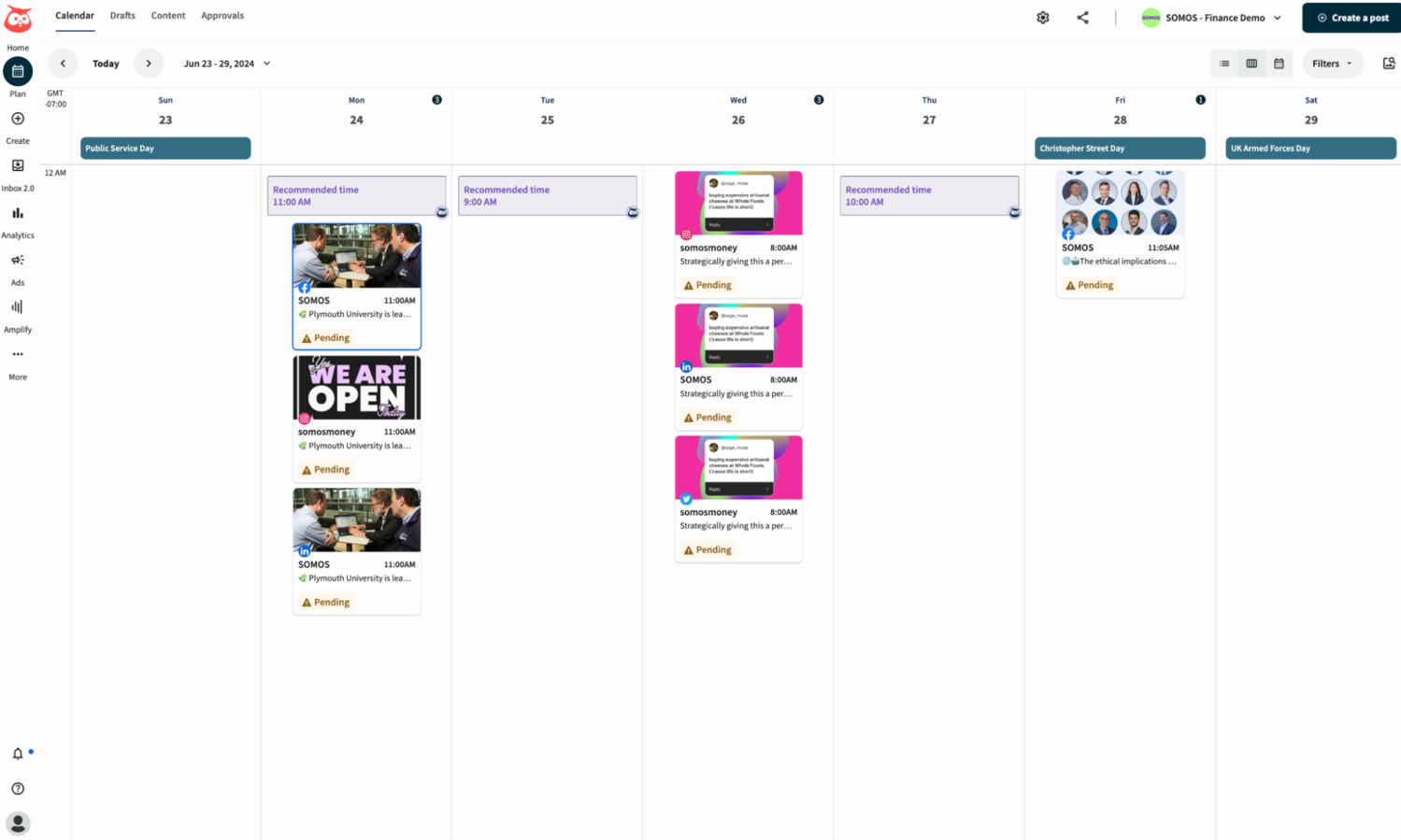
SendPulse
Purpose: automation and distribution.
SendPulse will help you promote your content via email, web push notifications, and Facebook Messenger campaigns. The platform provides great opportunities for personalization, segmentation, and A/B testing.
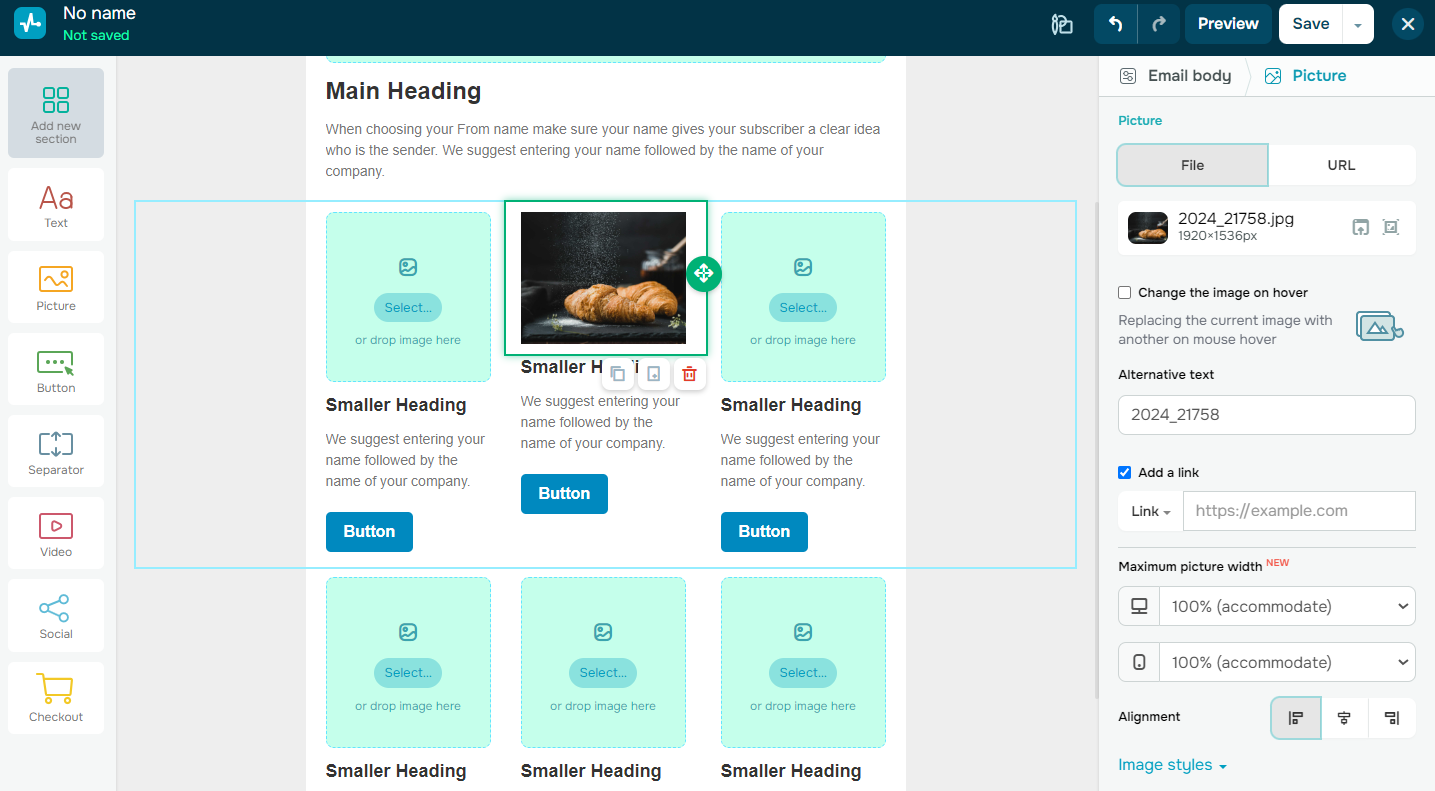
BuzzSumo
Purpose: monitoring.
BuzzSumo helps to explore high-performing content in social media and monitor your competitors, brand mentions, and industry updates. The tool also helps identify influencers that can help power-up your brand or content marketing campaign.
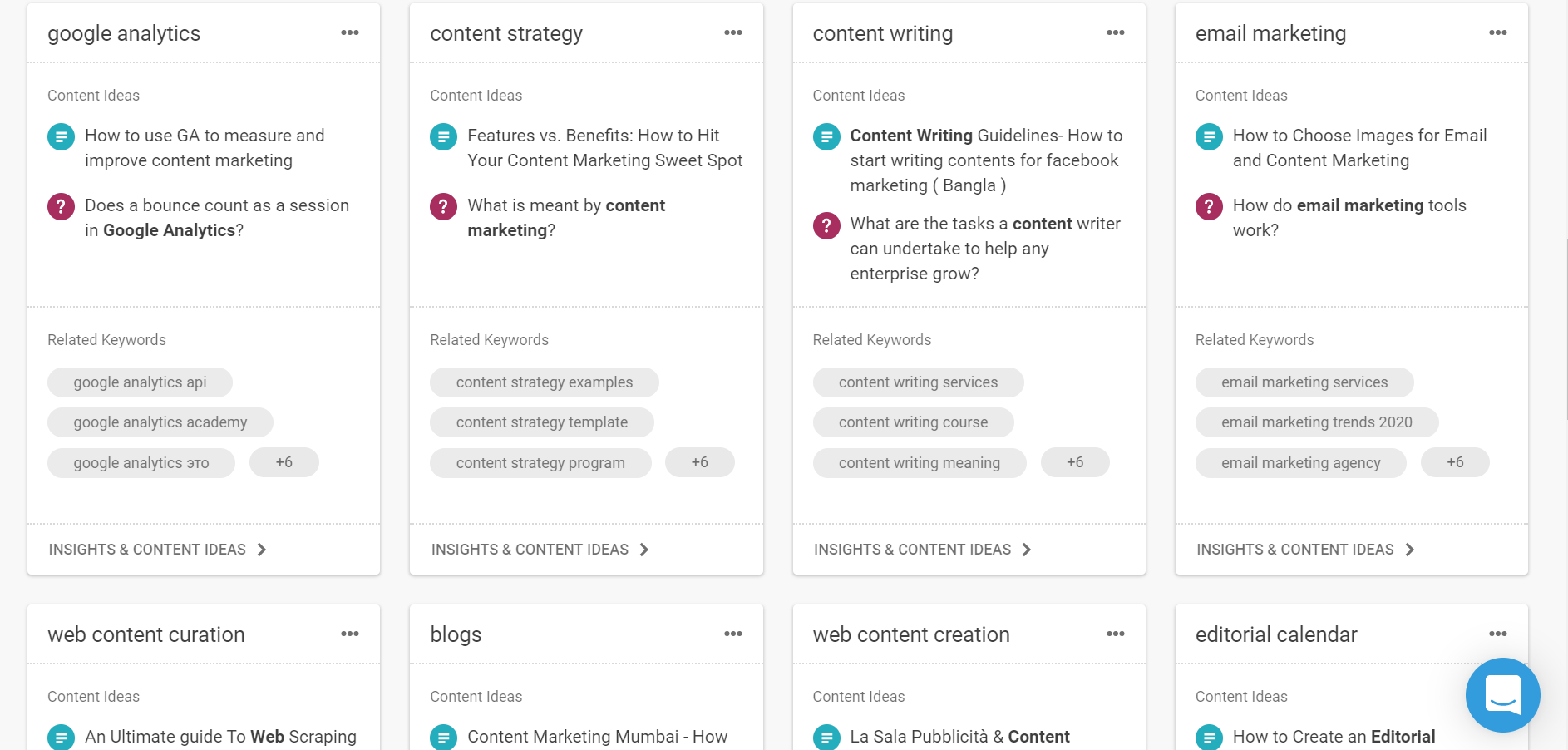
Summing it up
Content marketing is a good way to create your brand’s image, inform your audience, as well as accomplish your performance goals like expanding customer base, generating leads, creating and stimulating demand.
Let’s recap the essential steps for creating an effective content marketing strategy:
- Identify your goals — both long and short-term. They must be specific, measurable, attainable, relevant, and time-bound.
- Do audience research: add questions to your subscription form, offer a survey, surf forums and social media pages, and organize interviews. Create customer profiles to find the pain points and interests of your audience and make relevant content.
- Create a content strategy template. Layout a plan for the type of content, topic, quantity and frequency of publication, platforms for publishing, channels of distribution, expected results of your content marketing campaigns.
- Set up a team. Make sure that you have a team that can deal with planning, creating, distributing, and analyzing your content.
- Calculate your budget. Include not only the salary of the members of your content marketing team but also expenses like dedicated tools, paid advertising, blog maintenance, and sponsored publications in professional media.
- Create content. Choose a type of content based on your audience’s stage in the sales funnel. Keep a balance between informational, entertaining, and promotional content.
- Schedule the publishing. If you don’t have an opportunity to publish content often, at least do it regularly. Aim to be predictable in the eyes of your audience.
- Distribute content through appropriate marketing channels with SendPulse. While choosing a suitable channel, take into account the type of content and your audience’s stage in the sales funnel for the best results.
- Analyze your content’s performance. Analysis is necessary for improving your strategy and managing your budget more effectively.





